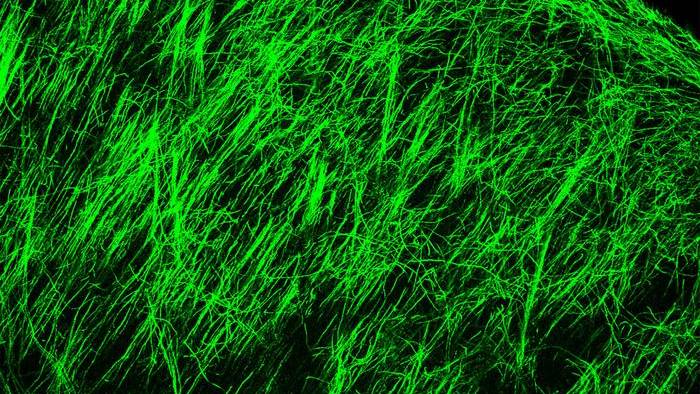In a groundbreaking study published in Cell on May 2, 2024, researchers have discovered a novel protein function inhibitor called ESI1 that can regenerate vital myelin coatings in mice mimicking multiple sclerosis (MS) symptoms and lab-prepared human brain cells. This breakthrough could potentially shift the therapeutic focus from managing symptoms to actively promoting repair and regeneration of myelin, a crucial component of nerve fibers.
“Currently, there are no effective therapies to reverse myelin damage in devastating demyelinating diseases such as MS,” says corresponding author Q. Richard Lu, PhD, a top brain research expert at Cincinnati Children’s. “These findings are significant as they offer new pathways for treatment that potentially shift the therapeutic focus from just managing symptoms to actively promoting repair and regeneration of myelin.”
Unsilencing the Repair Process
The research team found that brain regions damaged by MS still possessed oligodendrocytes (OLs), cells responsible for producing myelin sheaths that wrap around nerve cell axons. However, the disease activates other cell types and signals that silence the repair function of OLs. By identifying the genetic changes and signals involved in the repair silencing process, the team discovered ESI1, a small molecule compound that can reverse the silencing and set the OLs free to do their jobs.
The study, which spanned over five years and involved researchers from 16 institutions worldwide, revealed that OLs within MS lesions lacked an activating histone mark called H3K27ac while expressing high levels of two repressive histone marks associated with silencing gene activity. ESI1 treatment tripled the levels of the desired H3K27ac histone mark in OLs while sharply reducing levels of the two repressive histone marks.
Promising Results in Mice and Lab-Grown Human Tissue
In both aging mice and mice mimicking MS, ESI1 treatment prompted myelin sheath production and improved lost neurological function. Testing included tracking gene activation, measuring the microscopic new myelin sheaths surrounding axons, and observing that treated mice were quicker at navigating a water maze.
The team also tested the treatment on lab-grown human brain cells using myelin organoids, a simplified type of brain organoid that produces complex myelinating cells. When exposed to ESI1, the treatment extended the myelin sheath of myelinating cells.
The study’s findings may spark a new approach to stopping the degenerative effects of MS and other neurodegenerative diseases. Myelin regeneration treatment could also be helpful for people recovering from brain and spinal cord injuries and may even slow or reverse cognitive losses that often occur during aging.
However, more research is needed to determine whether human clinical trials can be launched to evaluate ESI1 as a potential treatment. “This study is a beginning,” Lu says. “Prior to finding ESI1, most scientists believed that remyelination failure in MS was due to the stalled development of precursors. Now we show a proof of concept that reversing the silencing activity in OLs present in the damaged brain can enable myelin regeneration.”
Keyword: myelin regeneration
If our reporting has informed or inspired you, please consider making a donation. Every contribution, no matter the size, empowers us to continue delivering accurate, engaging, and trustworthy science and medical news. Independent journalism requires time, effort, and resources—your support ensures we can keep uncovering the stories that matter most to you.
Join us in making knowledge accessible and impactful. Thank you for standing with us!

